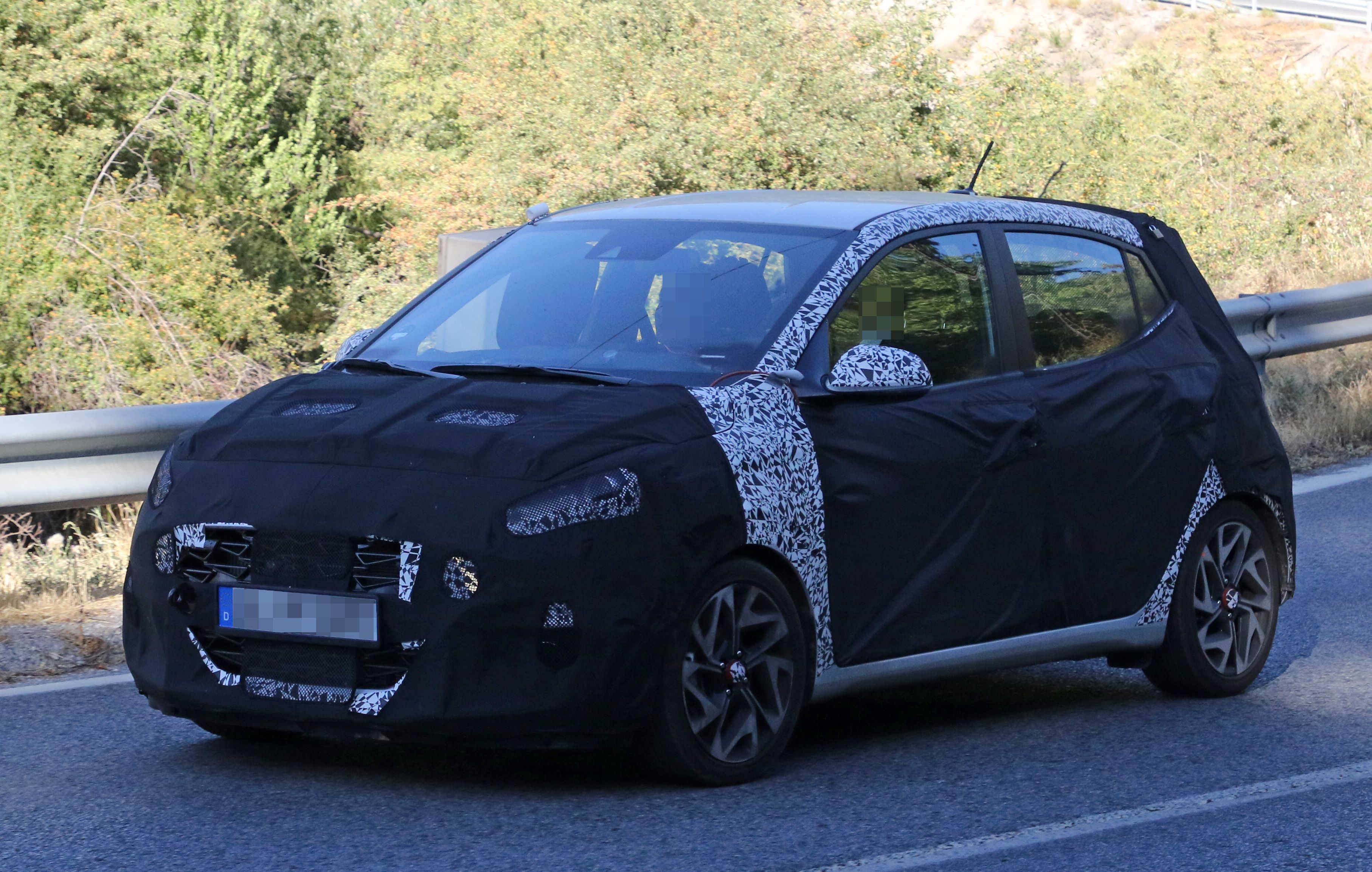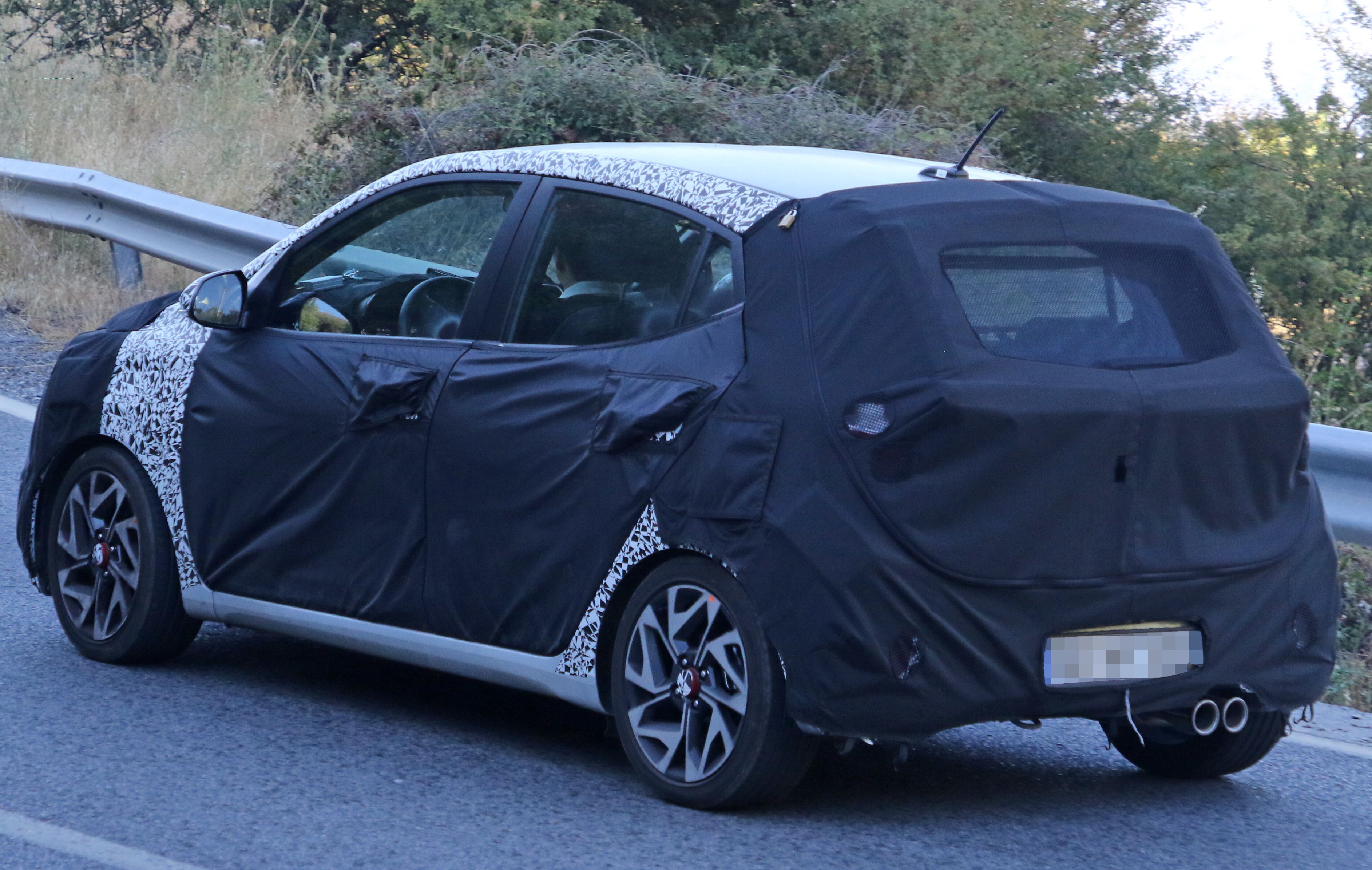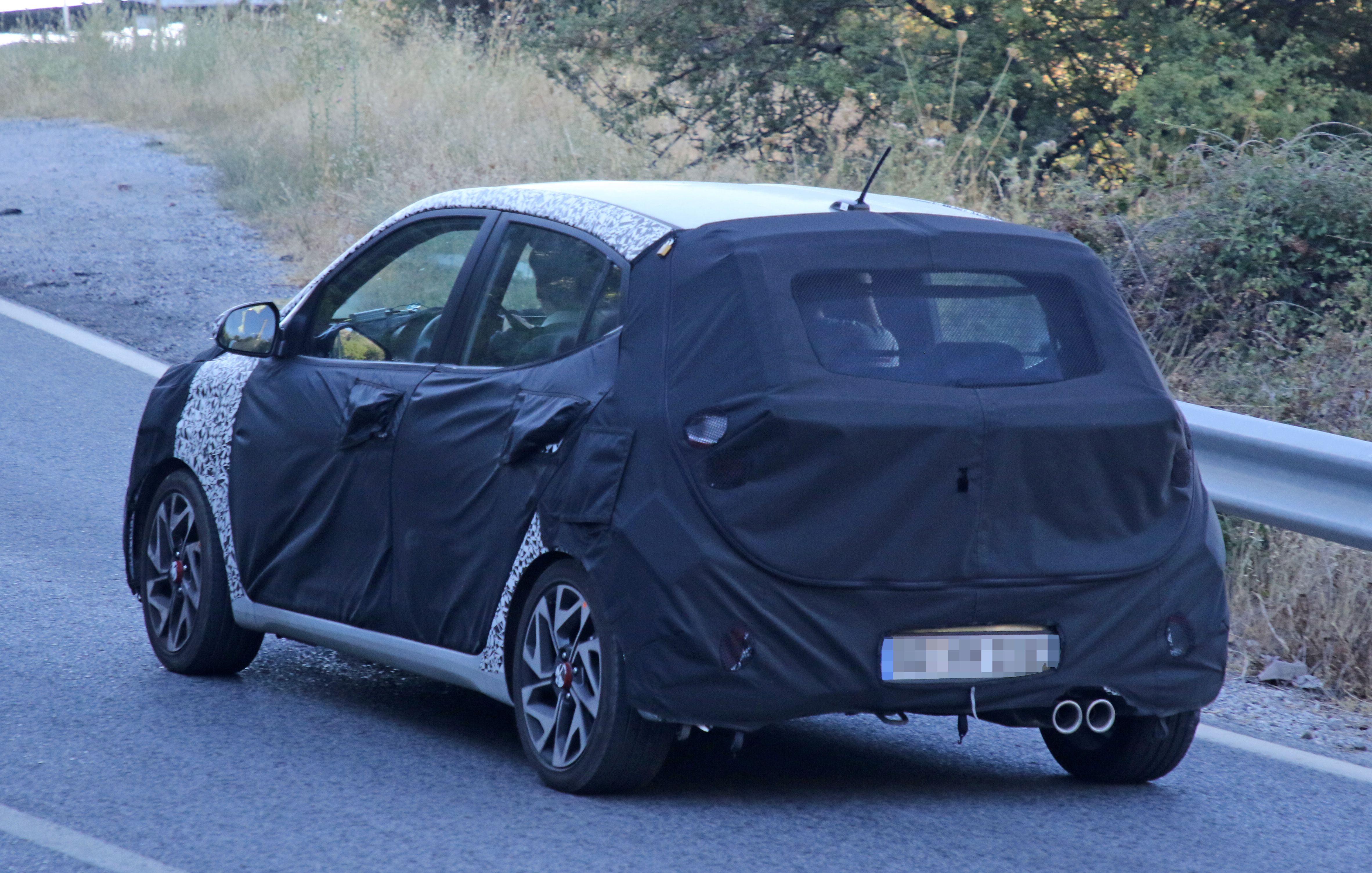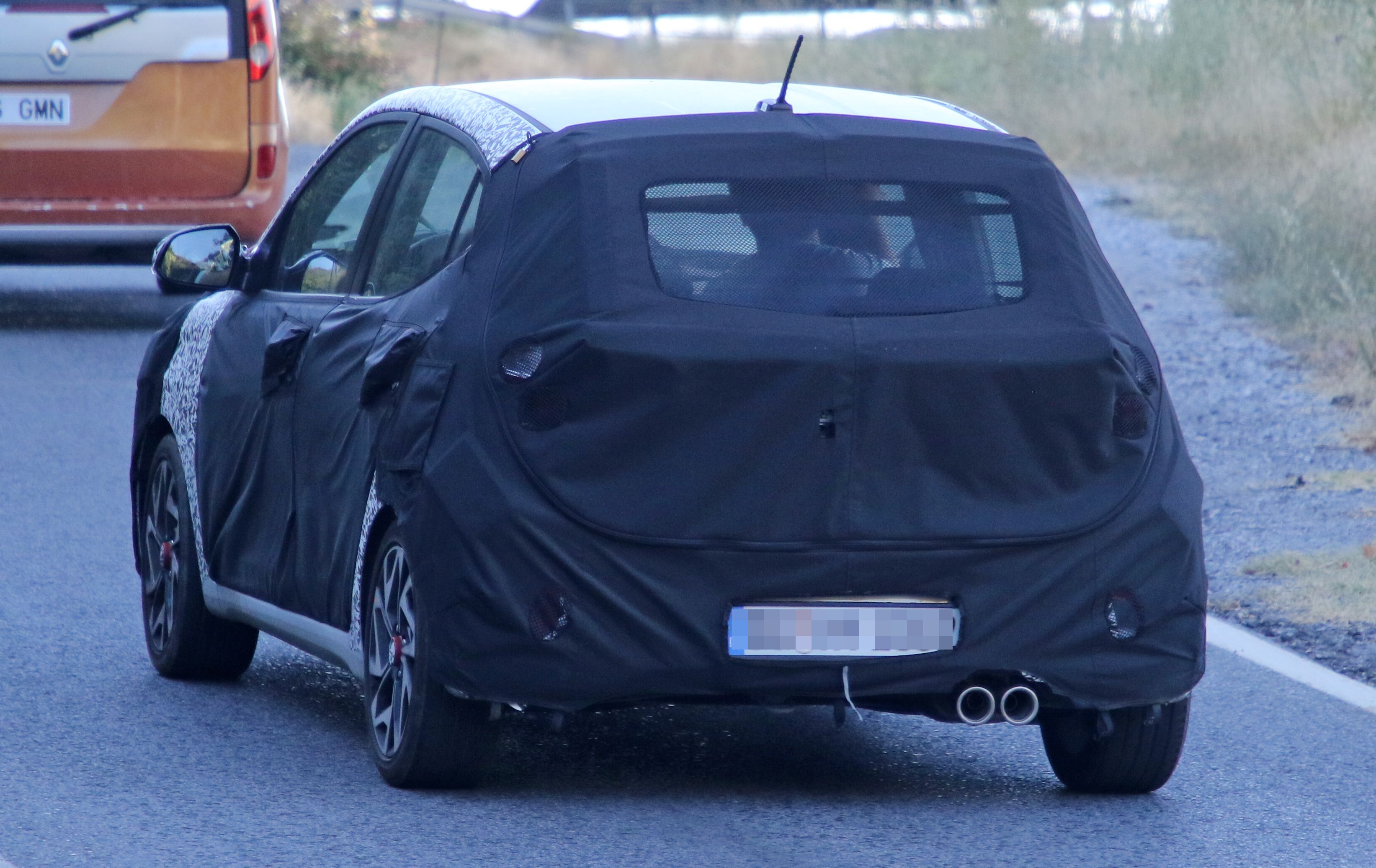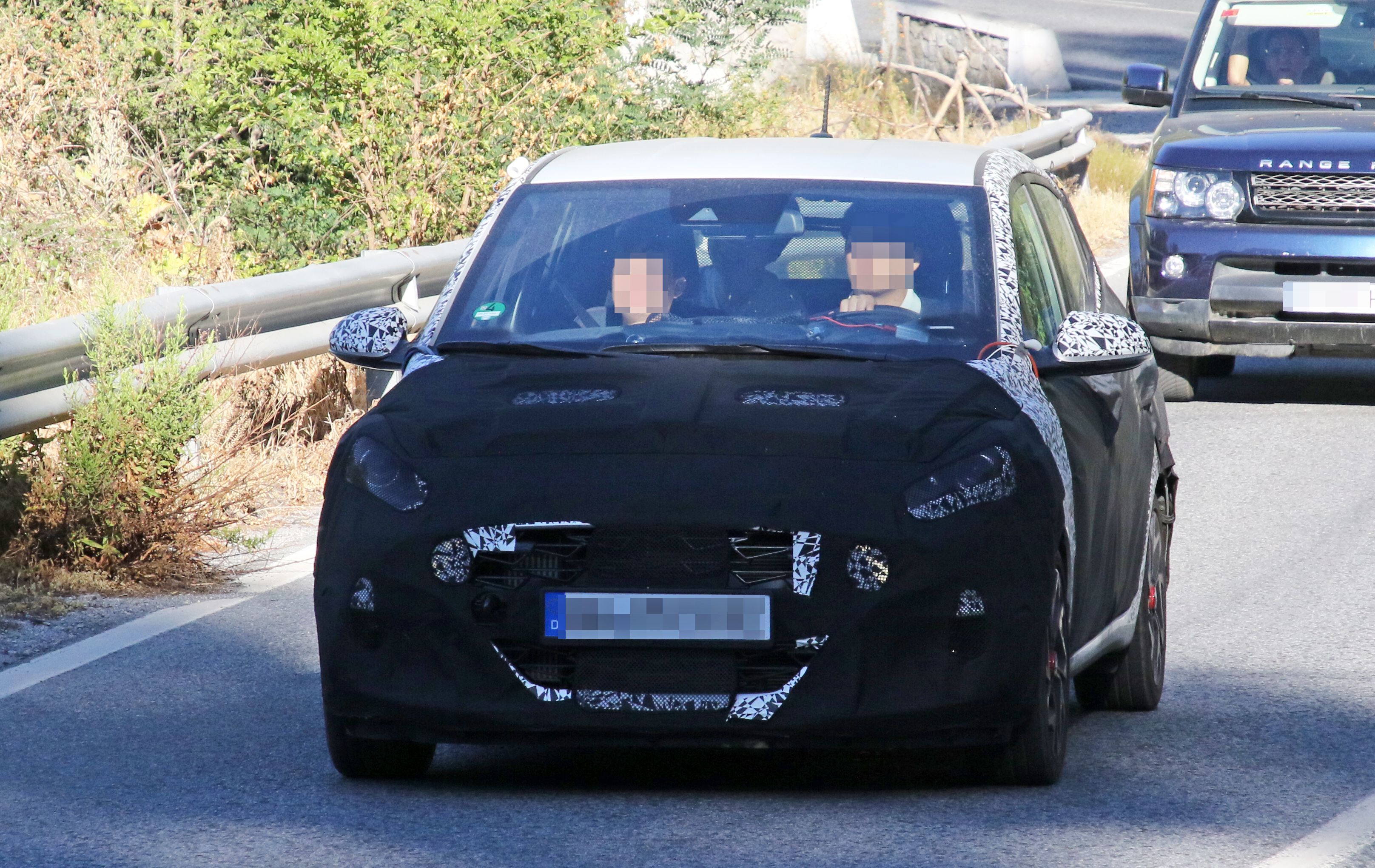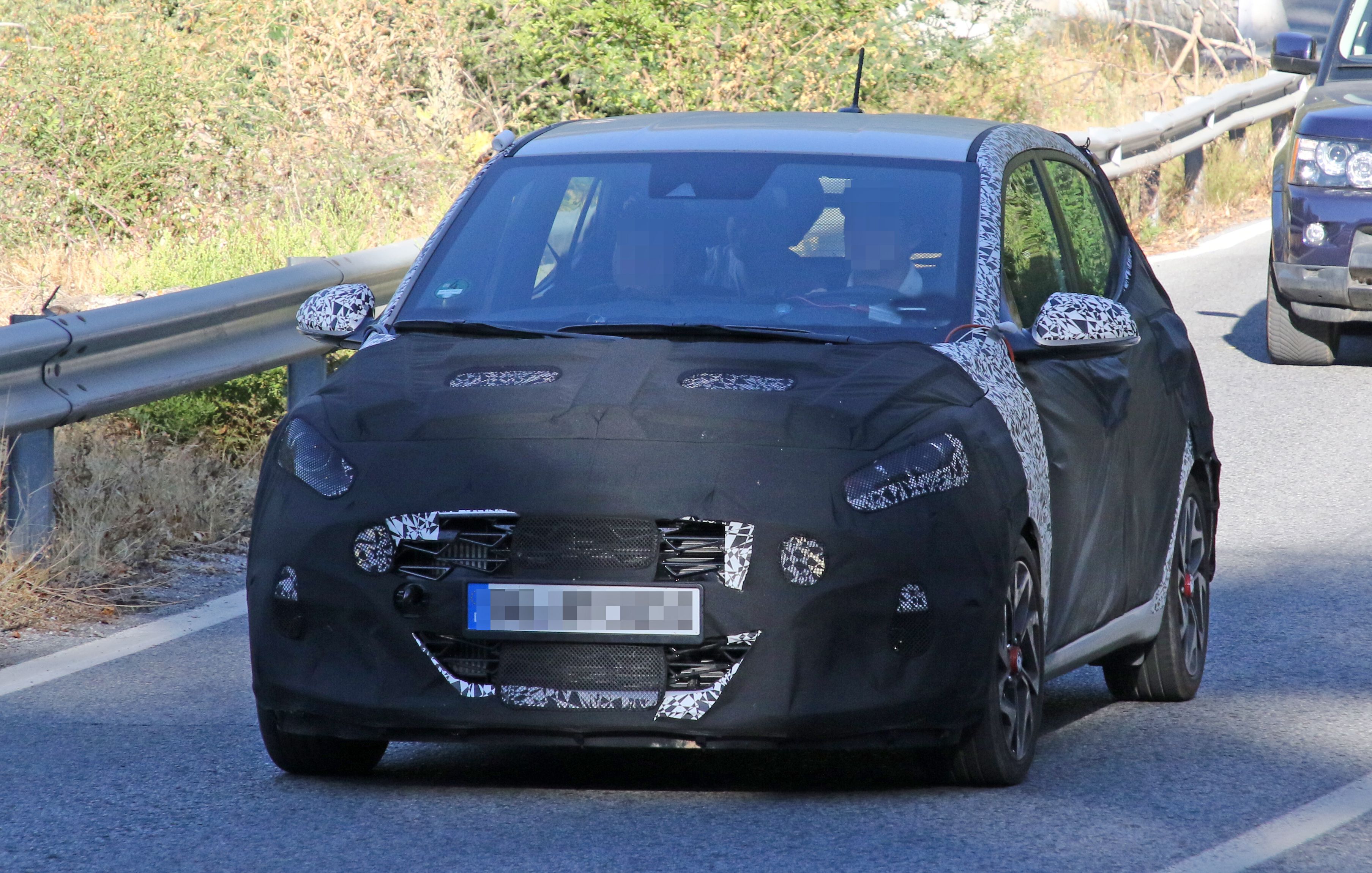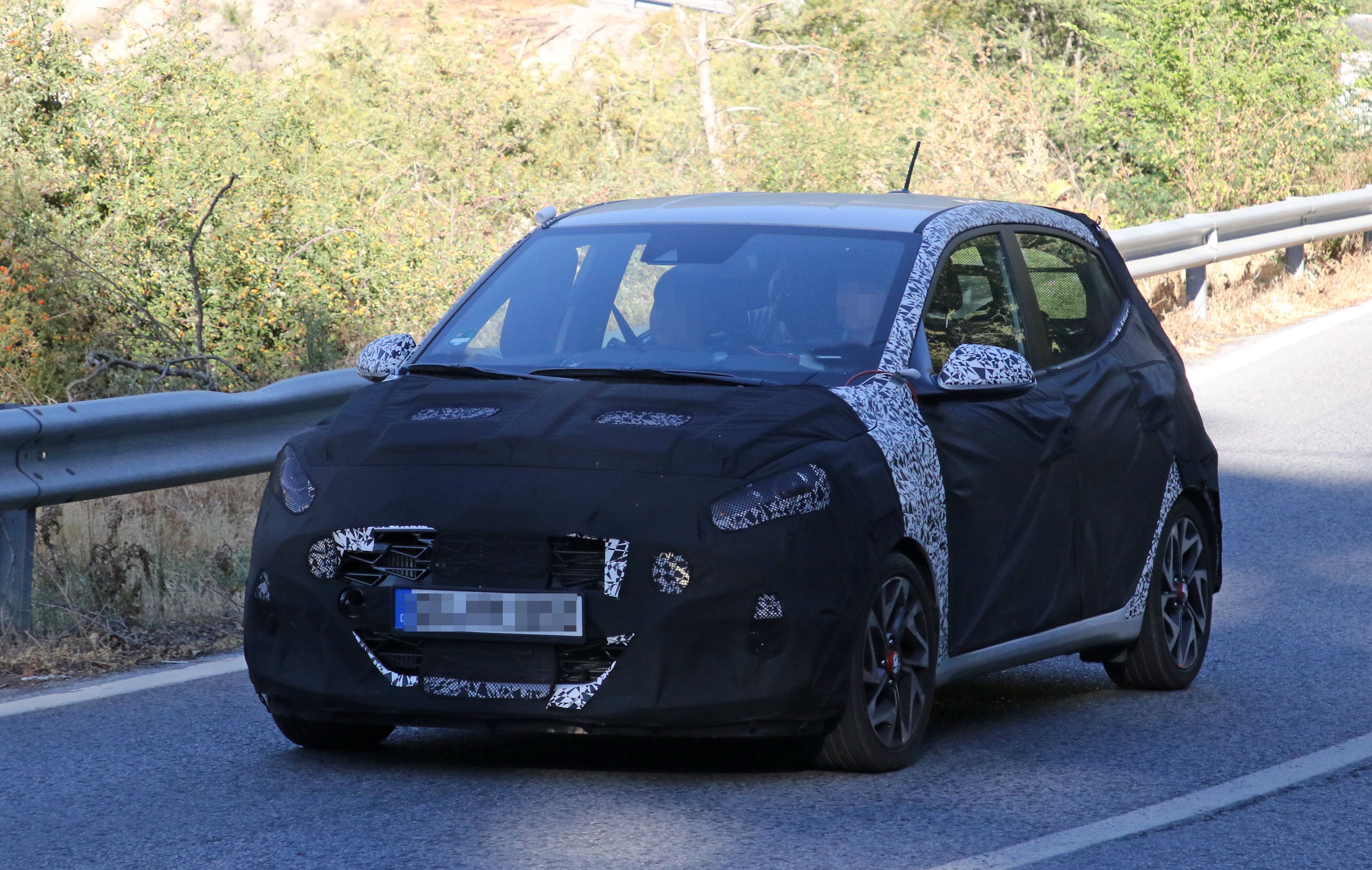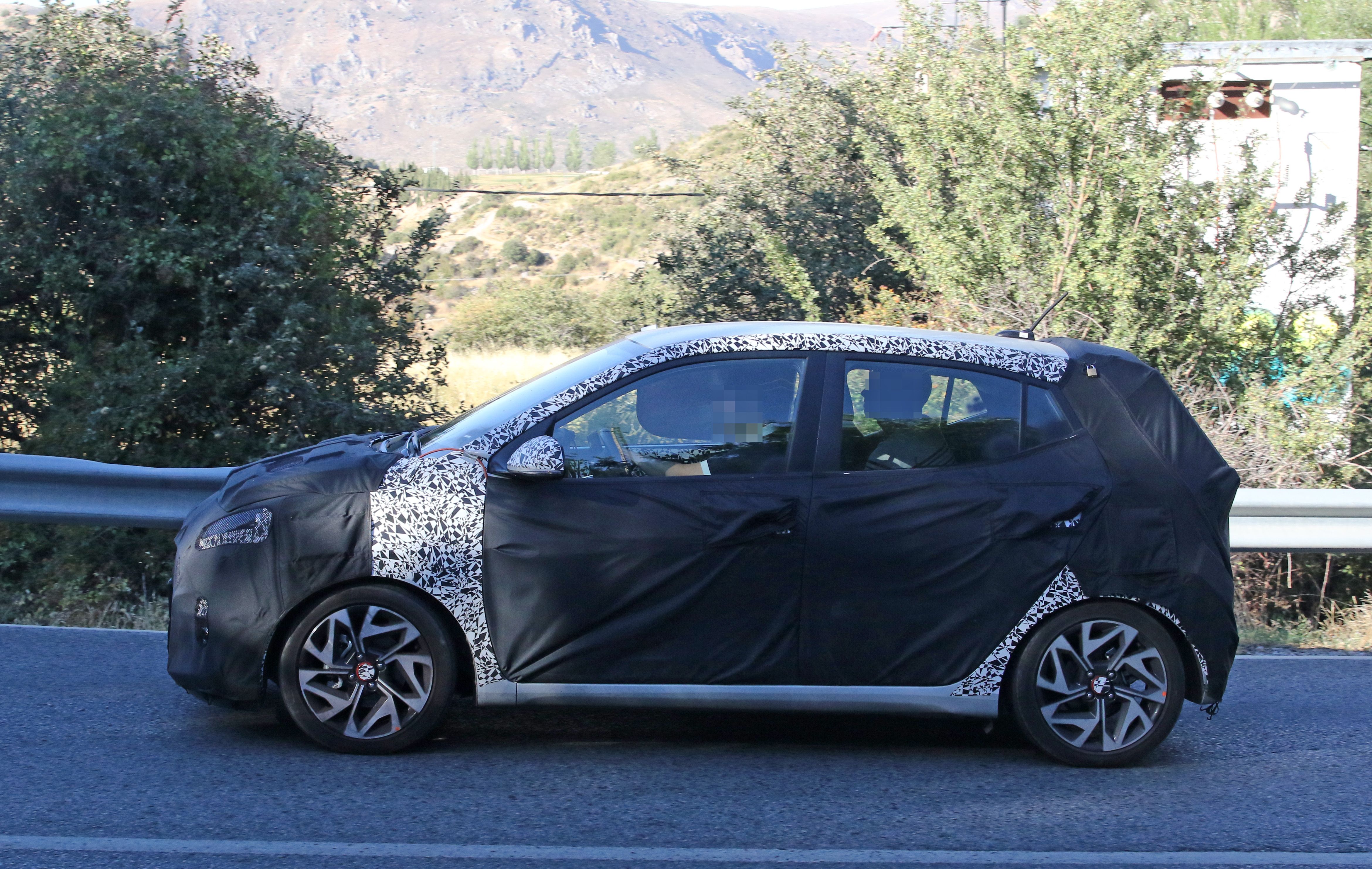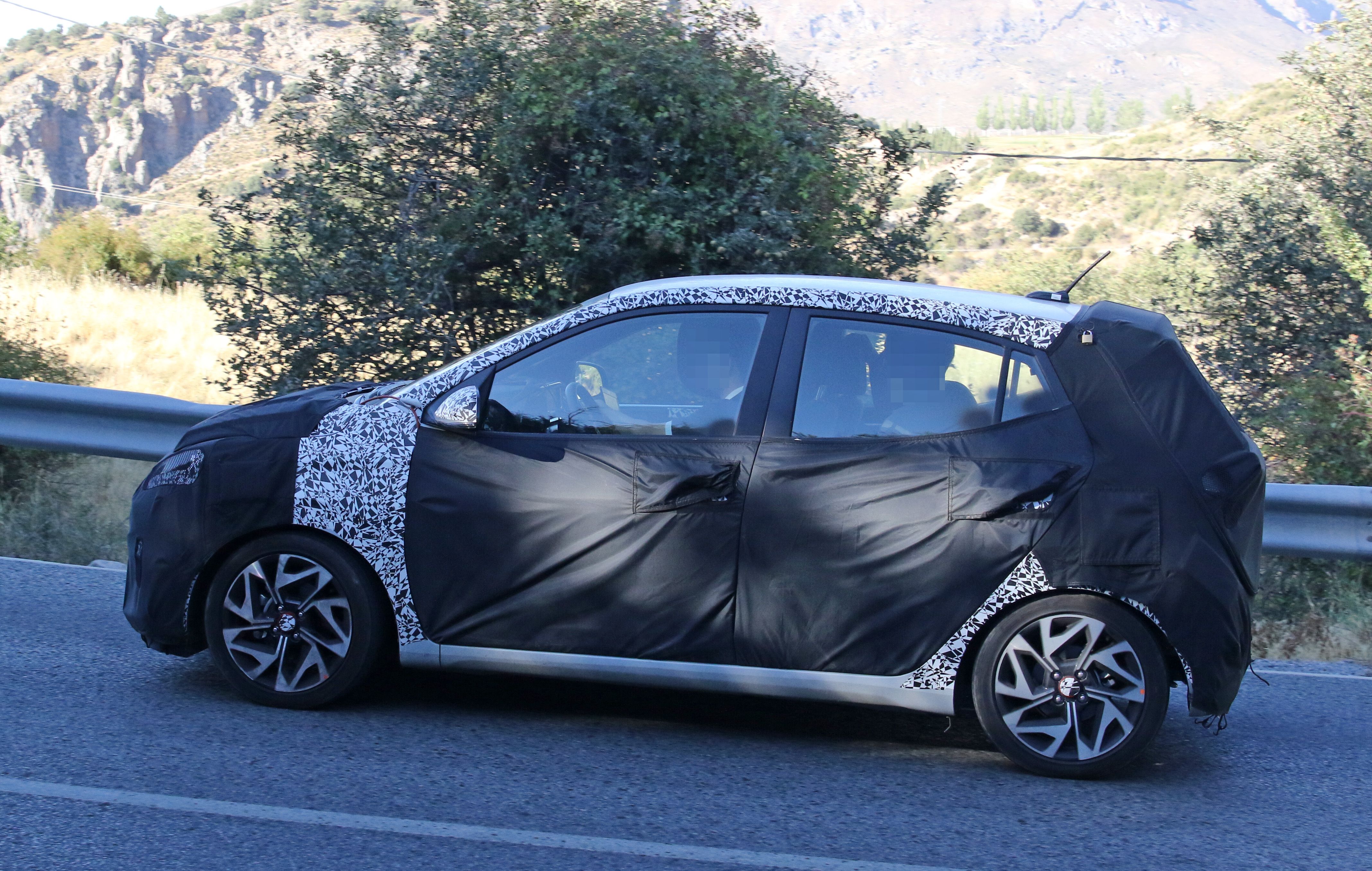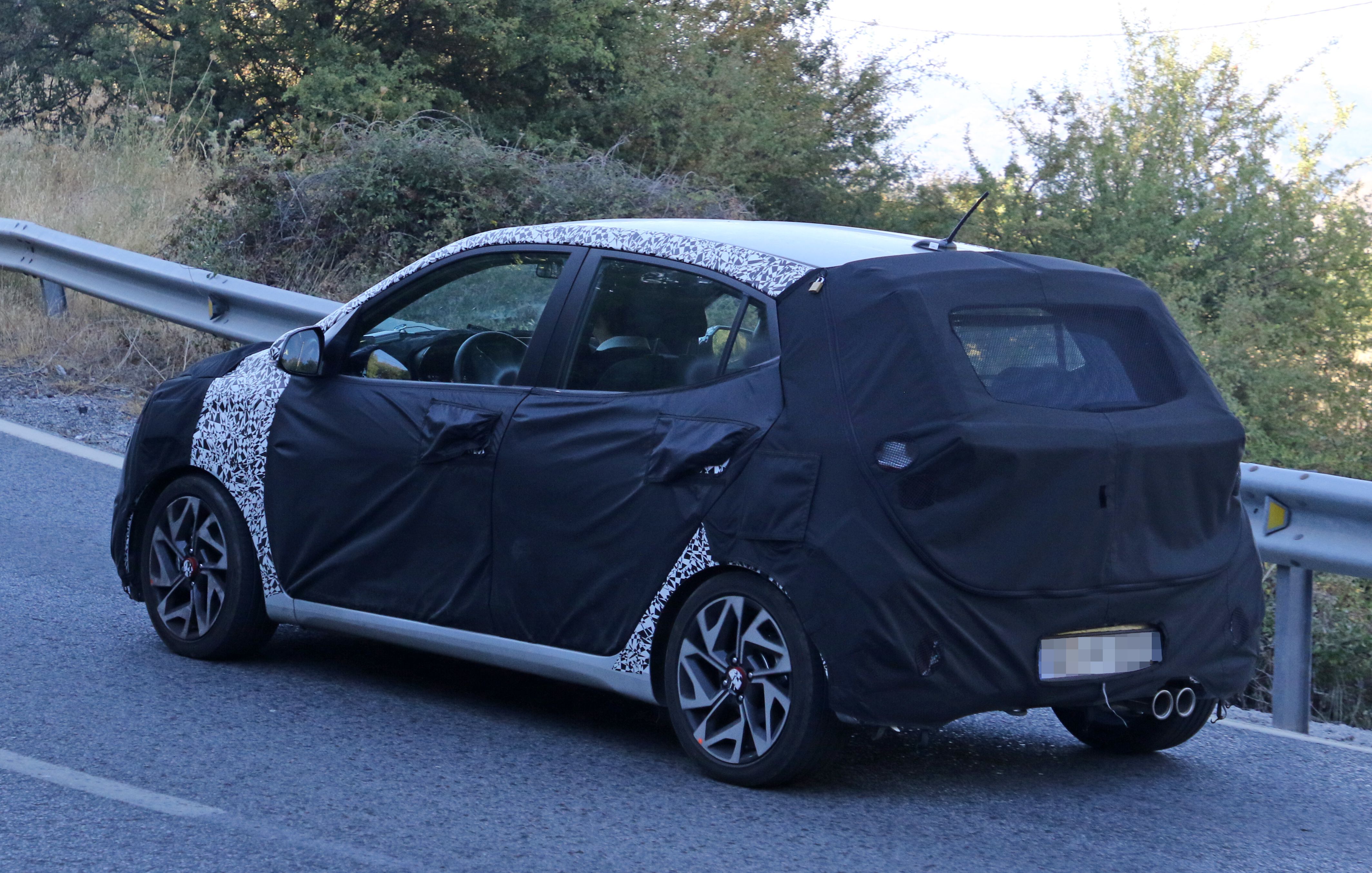The 2020 Hyundai i10 N is a higher performance version of the company's third-generation hatchback. Set to be unveiled at the 2019 Frankfurt Motor Show, the tiny i10 will spawn a more powerful variant in 2020. At least that's what the recent spy shots suggest. Our paparazzi spotted a slightly beefed-up i10 testing on public roads and we have reasons to believe that it will sport an "N" badge.
This will be the first time the i10 spawns a higher performance version. Although it's been around since 2007, the i10 was never more than just a mundane city car with small engines rated at well below 100 horsepower. This could change with the third-generation model. Let's find out more about it in my speculative review below.
2020 Hyundai i10 N
- Make: Array
- Model: 2020 Hyundai i10 N
- [do not use] Vehicle Model: Array
Exterior
The car in the spy shots is heavily camouflaged and most details are well hidden under the wraps, but the new-generation i10 isn't much of a mystery. That's because the hatchback was unveiled in India as the Grand i10 NIOS in August 2019 and it will probably look the same in Europe.
The new i10 features a slightly sportier design. It has a much bigger grille in the front, flanked by sharp outlets onto the sides and new, swept-back headlamps that extend into the fenders. The dull engine hood of the previous model was replaced by a more muscular unit with a slightly raised center section. The nose is also a bit longer, so the new i10 looks more like a subcompact hatchback rather than a city car.
The i10's profile is also more appealing now, thanks to sculpted upper fenders and side skirts and slightly narrower windows. The rear doors are also a bit longer, which suggests that the third-gen i10 is bigger than its predecessor.
The rear section looks like a milder revision of the old car. The upper section looks almost the same, while the taillights retain a similar shape, but with sharper edges. A dented-in lower tailgate and a chrome strip add a bit of elegance, while the bumper looks sportier and even includes a diffuser-like element at the bottom.
So how do we know that the car in the photos is a sportier model of the N variety? Well, the first hint is in the front grille, which features a pattern different from the regular i10 and similar to that of the i30 N. The hatchback also features sportier wheels with red center caps and tires that are wider and have a lower profile. The third hint can be spotted around back in the form of two bigger exhaust pipes.
Interior
The interior of the new i10 is a dramatic departure from the old model. While the second-gen hatchback looks awfully dated on the inside, the new i10 feels modern and youthful. The hatchback features a new three-spoke steering wheel and a modern instrument cluster with a small screen, while the center stack now incorporates an eight-inch infotainment display. The latter eliminates the need for multiple buttons and knobs, so the center dashboard looks much cleaner now. The center unit features A/C vents only, while the A/C controls bellow occupy on a small portion of the center stack. The three-layer dashboard features round A/C vents at the corners.
As far as features go, it comes with two USB charging ports, a segment first, optional wireless charging, and a rear-view monitor. The plastics look better, as does the fabric on the seats. Hyundai also offers two-tone interiors that give the i10 a more upscale look. Interestingly enough, the BlueLink connectivity system seen in the Venue isn't offered in the India-spec i10, but maybe it will make it on the European version.
Expect the N model to arrive with a few extra features, like sportier seats, contrast stitching, and N logos. It should also have blue accents just like the i30 N and optional suede, leather, and metal trim. The instrument cluster should include extra performance data like a g-force meter, torque levels, boost pressure, and maybe even an app to measure lap and sprint times.
Drivetrain
The drivetrain is the biggest mystery surrounding the Hyundai i10 N. The i30 N, for instance, comes with a turbocharged, 2.0-liter four-cylinder engine that generates 246 horsepower and 260 pound-feet in base form and 271 horses when fitted with the Performance Package. Sadly, this engine won't make it in the i10 N. While it would be cool to have such a small hatchback with such a powerful engine, Hyundai won't to it. For two reasons.
First, the i10 N would end up too expensive for its niche. But more importantly, a 2.0-liter won't fit under the i10's hood. Granted, it could fit with extensive modifications, but again, this would be too costly and it would make the i10 N too expensive for the small hatchback market.
So what engine will we find under the hood?
So far we know that Hyundai offers two mills in the standard i10 in India. There's a 1.2-liter four-cylinder gasoline unit rated at 82 horsepower and 114 Nm (84 pound-feet) of torque and a 1.2-liter four-cylinder diesel that cranks out 74 horses and 190 Nm (140 pound-feet) of twist. A diesel-powered N car is out of the question, which leaves us with the 1.2-liter gasoline mill.
But at 82 horses, the standard unit isn't powerful enough. Needless to say, Hyundai could squeeze a bit more power from this engine, but it won't hit 100 horsepower without turbocharging. Since adding a turbo to this engine would prove expensive, Hyundai will probably turn to force-fed units that it already uses in other models. I see two options here.
First up, there's the turbo 1.0-liter three-cylinder that the Korean brand offers in the i20. The 1.0 T-GDi generates a solid 120 horsepower and 172 Nm (127 pound-feet) of torque. If Hyundai goes with the three-pot, it will probably make some upgrades in order to increase power and durability. A proper performance model in this niche would need around 140 to 150 horsepower, so let's hope that Hyundai's engineers have the means to beef up this small unit. If you don't like the idea of a performance model fitted with a three-cylinder unit, remember that the Ford Fiesta ST also uses a three-pot (rated at 197 horsepower). If it worked for Ford and its bigger hatchback, it should work for the i10 as well.
The second option is the turbocharged, 1.4-liter four-cylinder that Hyundai uses in the bigger i30. This engine generates 140 horsepower and 241 Nm (178 pound-feet) of torque. That would be enough to keep the i10 N at the top of its segment performance-wise, but will a 1.4-liter fit under the hood? If not, the 1.0-liter three-pot remains a solid option.
While the regular i10 is available with either a five-speed manual or five-speed automatic, the i10 N should come with a six-speed manual engineered to handle the extra oomph.
Performance specs for the new i10 aren't yet available, but this hatchback is anything but fast. The i10 N, on the other hand, should rise above and hit 62 mph in less than 10 seconds. I'm betting on an eight-second benchmark, which will make it almost two seconds slower than the i30 N. Top speed will probably go as high as 130 mph. That's 25 mph slower than the i30 N, but it's more than enough for a hatchback as small as the i10.
Prices
It's a bit too early to talk about prices since Hyundai didn't even confirm a i10 N model, but we can estimate as to how much it could cost. The outgoing i10 retails from £9,200 and goes up to £13,780 in range-topping Premium SE trim. The new-generation i10 shouldn't be notably more expensive, so expect it to fetch between £9,500 and £14,000, depending on trim. The i10 N will become the most expensive model in the lineup and should fetch a bit more than the range-topping i10 trim. I'm guessing it will start from around £15,500.
Competition
Suzuki Swift Sport
The i10 N will be some four inches shorter than the Swift Sport, but in the absence of performance city cars, I guess we can compare the Hyundai with subcompact vehicles. The Sport is the range-topping trim of the current-generation Swift and comes with a powerful engine under the hood. The 1.4-liter Boosterjet mill cranks out 138 horsepower and 170 pound-feet of torque. The mill mates to a six-speed manual transmission. Design-wise, the Swift Sport looks the part. It has a sporty honeycomb grille, a bigger tailgate spoiler, and bespoke wheels. Pricing for the Swift Sport starts from £17,499, a bit high compared to what I'm expecting the Hyundai i10 N to fetch.
Read our full story on the 2019 Suzuki Swift Sport.
Conclusion
While not as powerful as segment leaders Volkswagen Polo GTi and Ford Fiesta ST, the Hyundai i10 N will have what it takes to take on the Suzuki Swift Sport. What's more, because it's a tad smaller, it will create its very own performance niche between city cars like the Volkswagen Up! and Fiat Panda and subcompacts like the Suzuki Swift and Volkswagen Polo. Should Hyundai opt for an output closer to the 200-horsepower mark, Ford and Volkswagen might lose some customers to a more affordable yet potent car.
Further reading
2019 Hyundai i10 Is so Cute That You Just Want to Pet It
Read our full review on the 2018 Hyundai i30 N.

